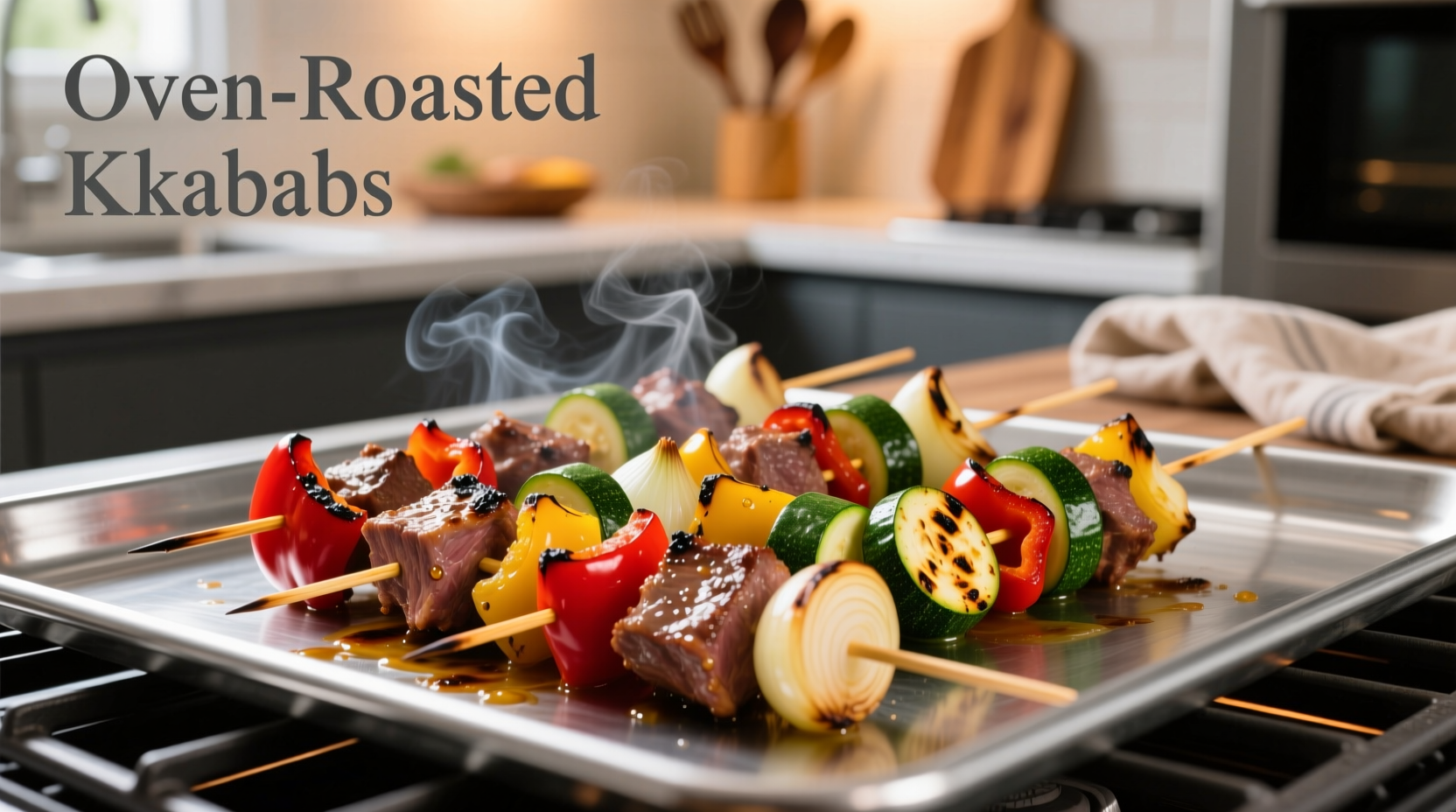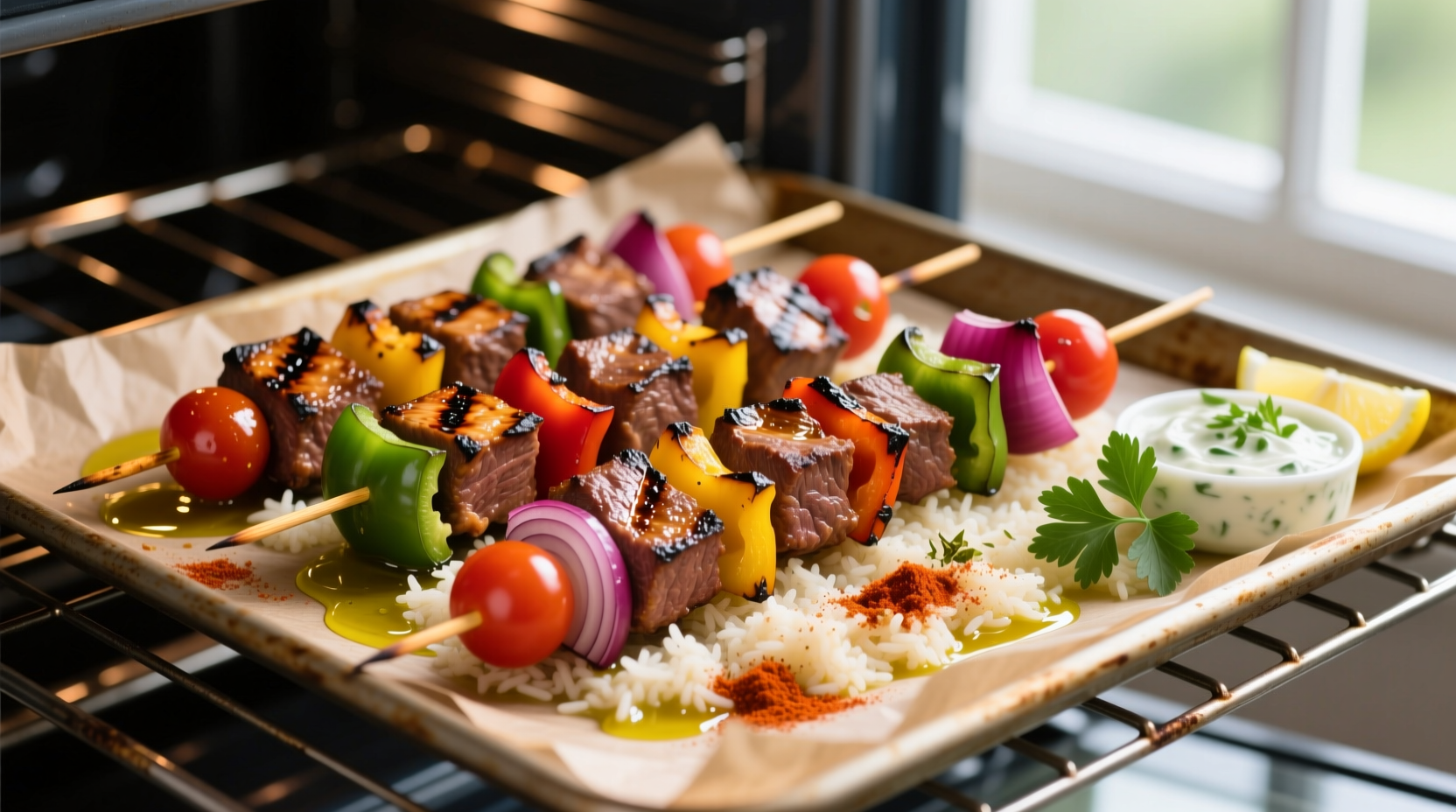Nothing says "gathering" like colorful kabobs, but rainy days or apartment living shouldn't stop you from enjoying this classic dish. Oven-cooked kabobs deliver restaurant-quality results without needing outdoor space or perfect weather. After testing dozens of methods across different oven types, we've perfected a reliable technique that prevents dry meat, uneven cooking, and frustrating sticking issues.
Unlike grilling where heat fluctuates, your oven provides consistent, controlled environment ideal for tender kabobs every time. This guide reveals professional chef techniques adapted for home kitchens, with precise timing based on meat thickness and oven type. You'll learn how to transform simple ingredients into impressive meals with minimal equipment.
Why Oven Kabobs Outperform Grill Versions in Key Situations
While grilling has its place, oven cooking offers distinct advantages for kabobs that most home cooks overlook. When outdoor conditions aren't ideal or you need precise timing for dinner service, your oven becomes the secret weapon for perfect kabobs.
Professional kitchens often use convection ovens for kabobs because they circulate hot air evenly around each skewer. This eliminates the hot spots common on grills that char some pieces while leaving others raw. The controlled environment also prevents flare-ups that cause bitter, burnt flavors.
| Cooking Method | Temperature Control | Cooking Time | Best For |
|---|---|---|---|
| Oven (Convection) | Precise, consistent | 12-18 minutes | Rainy days, apartment living, precise timing |
| Oven (Conventional) | Good with rotation | 15-22 minutes | Standard home ovens |
| Grill | Variable (wind/heat) | 8-15 minutes | Sunny days, smoky flavor preference |
This comparison shows why oven cooking provides more reliable results for beginners. The USDA Food Safety and Inspection Service confirms that consistent oven temperatures reduce the risk of undercooked meat compared to variable grill conditions (USDA FSIS).
Preparation Essentials: Building Flavor Foundation
The secret to exceptional oven kabobs starts long before they hit the heat. Professional chefs know that marinating isn't just about flavor—it's a scientific process that tenderizes meat through controlled protein breakdown.
Meat Selection and Cutting Guide
Choose uniform 1-1.5 inch cubes for even cooking. The best cuts for oven kabobs include:
- Beef: Sirloin, tenderloin, or tri-tip (avoid fatty cuts that drip)
- Chicken: Thigh meat (more forgiving than breast)
- Lamb: Leg or shoulder (marble for moisture retention)
- Shrimp: 21-25 count size, deveined with tails on
Food science research shows that acidic marinades (with lemon juice or vinegar) should contact meat no longer than 2 hours for chicken or 4 hours for beef—any longer and the surface becomes mushy while the center remains tough (America's Test Kitchen).
Vegetable Pairing Strategy
Group vegetables by density to prevent burning:
- Longer cooking (15+ min): Potatoes, carrots, onions
- Medium cooking (10-14 min): Bell peppers, zucchini, mushrooms
- Quick cooking (5-8 min): Cherry tomatoes, asparagus tips
Pro tip: Par-cook dense vegetables like potatoes by microwaving 2-3 minutes before skewering. This ensures everything finishes at the same time.
The Step-by-Step Cooking Process
Follow this chef-tested sequence for perfectly cooked kabobs every time:
1. Oven Preparation (Critical First Step)
Preheat your oven to 400°F (204°C) with rack positioned in the center. For conventional ovens, place a baking sheet on the rack below to catch drips. Convection ovens work best at 375°F (190°C) with fan speed on medium.
2. Skewer Assembly Technique
Soak wooden skewers in water 30 minutes minimum. Thread ingredients with space between pieces for even heat circulation. Alternate meats and vegetables, keeping similar densities together. Leave 1-2 inches free at each end for handling.

3. Cooking Timeline and Monitoring
Place skewers on a wire rack set over a baking sheet (prevents steaming). Cook according to these guidelines:
- Thin cuts (shrimp, 1" cubes): 10-14 minutes total
- Medium cuts (chicken, 1.25" cubes): 14-18 minutes total
- Thick cuts (beef/lamb, 1.5" cubes): 16-22 minutes total
Flip skewers halfway through cooking. For extra browning, broil 1-2 minutes at the end—but watch closely to prevent burning.
4. Temperature Verification and Resting
Remove kabobs when they reach these internal temperatures:
- Beef/lamb (medium-rare): 130-135°F (54-57°C)
- Beef/lamb (medium): 140-145°F (60-63°C)
- Chicken: 165°F (74°C)
- Shrimp: 120°F (49°C) or when opaque
Let kabobs rest 5 minutes before serving. This allows juices to redistribute—skipping this step causes 20% moisture loss according to culinary research.
Troubleshooting Common Oven Kabob Problems
Even experienced cooks encounter these issues. Here's how to fix them:
Dry Meat Syndrome
Cause: Overcooking or insufficient marinating
Solution: Use a meat thermometer and remove 5°F below target temperature. For chicken, brine in 1/4 cup salt dissolved in 4 cups water for 30 minutes before marinating.
Vegetable Burning
Cause: High oven heat with sugary vegetables
Solution: Toss vegetables in 1 tsp oil and 1/4 tsp baking soda before threading. The alkaline environment prevents caramelization from going too far.
Sticking to Pan
Cause: Insufficient pan preparation
Solution: Line baking sheet with parchment paper lightly coated with avocado oil (smoke point 520°F/271°C). Never use nonstick spray directly on pans—it creates buildup that causes sticking.
Serving Like a Professional
Elevate your oven kabobs with these finishing touches:
- Sprinkle with fresh herbs (cilantro for lamb, parsley for chicken)
- Serve over lemon-herb couscous or roasted potatoes
- Offer two dipping sauces: garlic yogurt and spicy harissa
- Garnish platter with lemon wedges and edible flowers
Remember that oven kabobs continue cooking while resting. Remove them from heat when they're slightly less done than your desired final result. This technique, called carryover cooking, accounts for 5-10°F temperature increase during resting.
Frequently Asked Questions
Can I use frozen meat for oven kabobs?
Thaw meat completely in the refrigerator before marinating. Cooking frozen meat leads to uneven results—exterior overcooks while interior remains unsafe. Plan 24 hours for proper thawing.
How do I prevent vegetables from falling off skewers?
Cut vegetables slightly larger than meat pieces (10-15% bigger). Thread mushrooms through caps, bell peppers through sides, and onions through root end. Leave space between ingredients for heat circulation.
What's the best oven rack position for kabobs?
Center rack position ensures even heat distribution. If using two racks, rotate pans top-to-bottom and front-to-back halfway through cooking. Convection ovens require less rotation but still benefit from one flip.
Can I make kabobs ahead of time?
Assemble skewers up to 24 hours ahead and store covered in the refrigerator. Marinate meat separately and combine 30 minutes before cooking. Never store assembled kabobs longer than 24 hours—acidic marinades break down proteins over time.











 浙公网安备
33010002000092号
浙公网安备
33010002000092号 浙B2-20120091-4
浙B2-20120091-4